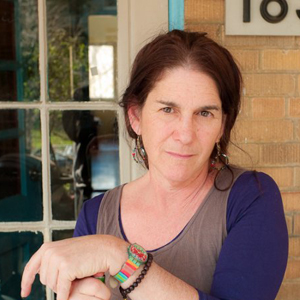Transpersonal Coaching & Therapy Network Forum
Use of this forum is exclusively for TCTN members.
.
For information about TCTN membership (free) visit the TCTN page.
.
Register or login below to add a new forum topic or respond to an existing topic.
Notifications
Clear all
Topic starter
29/10/2018 10:57 am
As a coach and dealing with individuals experiencing stress and burnout it is important to me that I feel congruent with transpersonal coaching techniques before applying them in practice. Over this last week I have observed my physiological reactions when going into a state of open awareness during a period of anxiety or stress. I noticed that the normal tightness in my stomach instantly dissipates once I raise my hands and move them out the side (This has become symbolic in helping me reach this state). Recovery instantaneously coincides with the hand movement which suggests to me that this action has been embedded unconsciously.
I would be interesting to hear everyone's thoughts and experiences relating to this and whether they feel that by using a specific trigger action may help clients achieve this state more easily.
29/10/2018 11:37 am
Hello Donna,
How astute of you to observe your reactions in this way. "Going meta" is in itself a useful skill within Open Awareness, don't you think?
I've found too, like you, that clients link, mostly non-consciously, somatic anchors to certain states. OA is a particularly resourceful state. Sometimes as coaches we observe a client's anchor or less commonly a client verbalises it. I agree this could be a useful positive feedback mechanism to embed oa as a reflex state - a kind of shortcut. Contrary to classic NLP teaching though, I suspect that anchors are most useful when we help our clients to unearth those that occur spontaneously, instead of trying to manufacture new ones. Anchors seem to include a variety of actions, from tongue position, to hand movements or position, to breath sensations.
I'd love to hear of more from others.
I found your particular observation fascinating, in that I've noticed that when I guide clients into oa I find myself using a similar "hand expanding" gesture, even during a closed eyes process, but the cues for my personal practice are different (most often a pause at the end of the out breath).
Fantastic discussion thank you.
Hennie
This post was modified 7 years ago by Hennie
01/11/2018 5:25 pm
OA is a profound state and one i keep slipping out of - anchoring might help as well as regular times in the day when I practise OA.
01/11/2018 5:31 pm
For me as a personal experience imagining states for anchoring are no where near as powerful as actually experienced emotional states or physiology moves.
09/04/2019 10:11 am
Well this technique of mine is not very useful when with a client  (unless I start car-coaching) but when I am driving i use the car side mirrors as a visual field reminder and practice for OA. Lol.
(unless I start car-coaching) but when I am driving i use the car side mirrors as a visual field reminder and practice for OA. Lol.
09/04/2019 3:25 pm
Talking about interesting anchors for open Awareness. Mandy wrote in another forum post on the Frustration ( http://iactm.org/tctn-forum/main-forum/the-emotion-of-frustration/#post-10)
The practise of Open Awareness is undoubtedly an incredible tool for shifting into presence. And having created an anchor to move easily into OA, it's simply a click of the fingers that allows me to transform frustration into a signal to ask 'what is the next smallest step I can take in this aspect of my life to move toward my goal of creating and living an extra-ordinary life
As a coach and dealing with individuals experiencing stress and burnout it is important to me that I feel congruent with transpersonal coaching techniques before applying them in practice. Over this last week I have observed my physiological reactions when going into a state of open awareness during a period of anxiety or stress. I noticed that the normal tightness in my stomach instantly dissipates once I raise my hands and move them out the side (This has become symbolic in helping me reach this state). Recovery instantaneously coincides with the hand movement which suggests to me that this action has been embedded unconsciously.
I would be interesting to hear everyone's thoughts and experiences relating to this and whether they feel that by using a specific trigger action may help clients achieve this state more easily.
Hello Donna,
How astute of you to observe your reactions in this way. "Going meta" is in itself a useful skill within Open Awareness, don't you think?
I've found too, like you, that clients link, mostly non-consciously, somatic anchors to certain states. OA is a particularly resourceful state. Sometimes as coaches we observe a client's anchor or less commonly a client verbalises it. I agree this could be a useful positive feedback mechanism to embed oa as a reflex state - a kind of shortcut. Contrary to classic NLP teaching though, I suspect that anchors are most useful when we help our clients to unearth those that occur spontaneously, instead of trying to manufacture new ones. Anchors seem to include a variety of actions, from tongue position, to hand movements or position, to breath sensations.
I'd love to hear of more from others.
I found your particular observation fascinating, in that I've noticed that when I guide clients into oa I find myself using a similar "hand expanding" gesture, even during a closed eyes process, but the cues for my personal practice are different (most often a pause at the end of the out breath).
Fantastic discussion thank you.
Hennie
OA is a profound state and one i keep slipping out of - anchoring might help as well as regular times in the day when I practise OA.
For me as a personal experience imagining states for anchoring are no where near as powerful as actually experienced emotional states or physiology moves.
Well this technique of mine is not very useful when with a client 
Talking about interesting anchors for open Awareness. Mandy wrote in another forum post on the Frustration ( http://iactm.org/tctn-forum/main-forum/the-emotion-of-frustration/#post-10)
The practise of Open Awareness is undoubtedly an incredible tool for shifting into presence. And having created an anchor to move easily into OA, it's simply a click of the fingers that allows me to transform frustration into a signal to ask 'what is the next smallest step I can take in this aspect of my life to move toward my goal of creating and living an extra-ordinary life
THIS FORUM IS FOR:
- Exploring the value of transpersonal perspectives in coaching or therapy.
- Investigating the usefulness of transpersonal interventions in coaching or therapy.
- Engaging in conversations to inspire and motivate a transpersonal vision among coaches and therapists.
- Introducing and discussing transpersonal models and processes that can be applied in coaching or therapy.
- Sharing ideas, knowledge, experiences and resources that are useful to transpersonal coaches or therapists.
FORUM RULES:
- Only TCTN members are permitted to post in the TCTN forum. Membership is free
- Posts that are offensive, biased, unethical, unfair or generally negative will not be accepted.
- Any misconduct on the part of a member will result in that member being removed from TCTN and all their member benefits withdrawn.
- It is acceptable to link to published papers, articles and resources that are directly related to the topic of the forum post, however, promoting of services will not be allowed unless the service is relevant and has been granted the IACTM Stamp of Approval.









